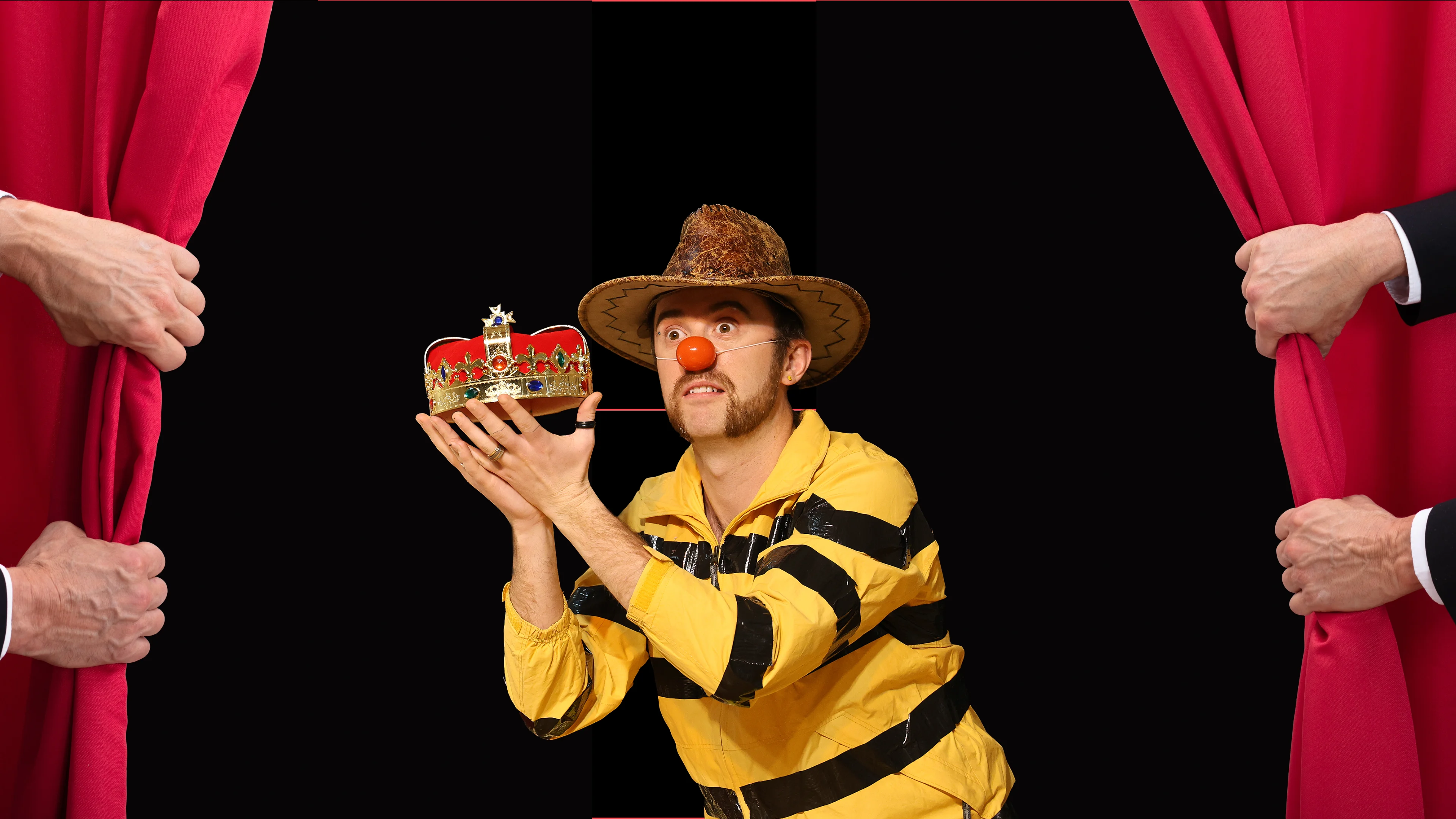
Taster Class In Clown Comedy
Theatre Deli, London
Learn More

Emotions are one of the fastest ways to give a character a Point of View.
While a full POV is a belief or worldview that colours everything a character does, an emotion can act as a quick-start version of that — a simple, instantly recognisable lens that the audience understands immediately.
Because emotions are universally recognisable, they can be powerful comic tools. They allow for fast character creation, high audience connection, and easy escalation into a Game.
If a Point of View is the sunglasses a character wears, an emotion is a coloured flash filter you can snap on in seconds.
An emotional POV is instantly playable and often needs little explanation.
The audience quickly reads your emotional state and begins anticipating how it will affect your choices.
Emotions are especially useful for clown and improv when you need something fast and strong to play.
Example:
POV: The eternal optimist (belief: “positivity is the best way to live”).
Emotional version: Happy — pure joy without the justification.
Both can create comedy, but the POV offers more longevity, while the emotion is a quick hook.
There are many emotion models, but most map to a core set. The “emotion wheel” is a useful tool for expanding these into nuanced variations.
Joy / Happiness — delight, amusement, pride, satisfaction, affection.
Sadness — disappointment, grief, loneliness, guilt, despair.
Fear — anxiety, nervousness, vulnerability, dread.
Anger — irritation, resentment, outrage, frustration.
Surprise — shock, wonder, confusion, awe.
Disgust — revulsion, contempt, distaste, moral outrage.
Trust — admiration, acceptance, affection, reliance.
Anticipation — eagerness, excitement, curiosity, impatience.
These are the flavours that make your emotional choice more distinct:
Joy → smug satisfaction, giddy delight, serene contentment.
Fear → jittery paranoia, frozen terror, cautious worry.
Anger → petulant irritation, volcanic rage, simmering annoyance.
Sadness → self-pity, quiet melancholy, dramatic wailing.
Over-complicated or muddled emotions read less clearly to an audience. Make your emotional choice strong and simple before adding complexity.
Dial the emotion up past natural realism. Go from “a bit annoyed” to “fuming at a teaspoon”.
Your emotion should influence every decision — not just facial expression and voice, but physicality, logic, and priorities.
Put an emotion in a setting where it doesn’t “belong”:
Extreme joy at a tax audit.
Bone-deep sadness at a surprise party.
Fear while ordering ice cream.
Emotional shifts can be game moves: sudden flips, slow builds, or whiplash oscillations.
Emotions are quick to play but can burn out if they’re not connected to a deeper POV.
A universally playable POV can contain an emotion, but the justification keeps it alive in more contexts.
Emotion alone is best for short-form games, warm-ups, or quick character sketching.
For longer formats, pair the emotion with a justification (“I’m angry because I believe rules keep us safe”) to keep it playable.
Starting point — When you need to create a character fast.
Heightening a scene — Choosing an emotion that amplifies stakes.
Unlocking a stuck scene — Changing an emotional state can open new beats.
Physical comedy — Emotions translate strongly into physicality and status.
